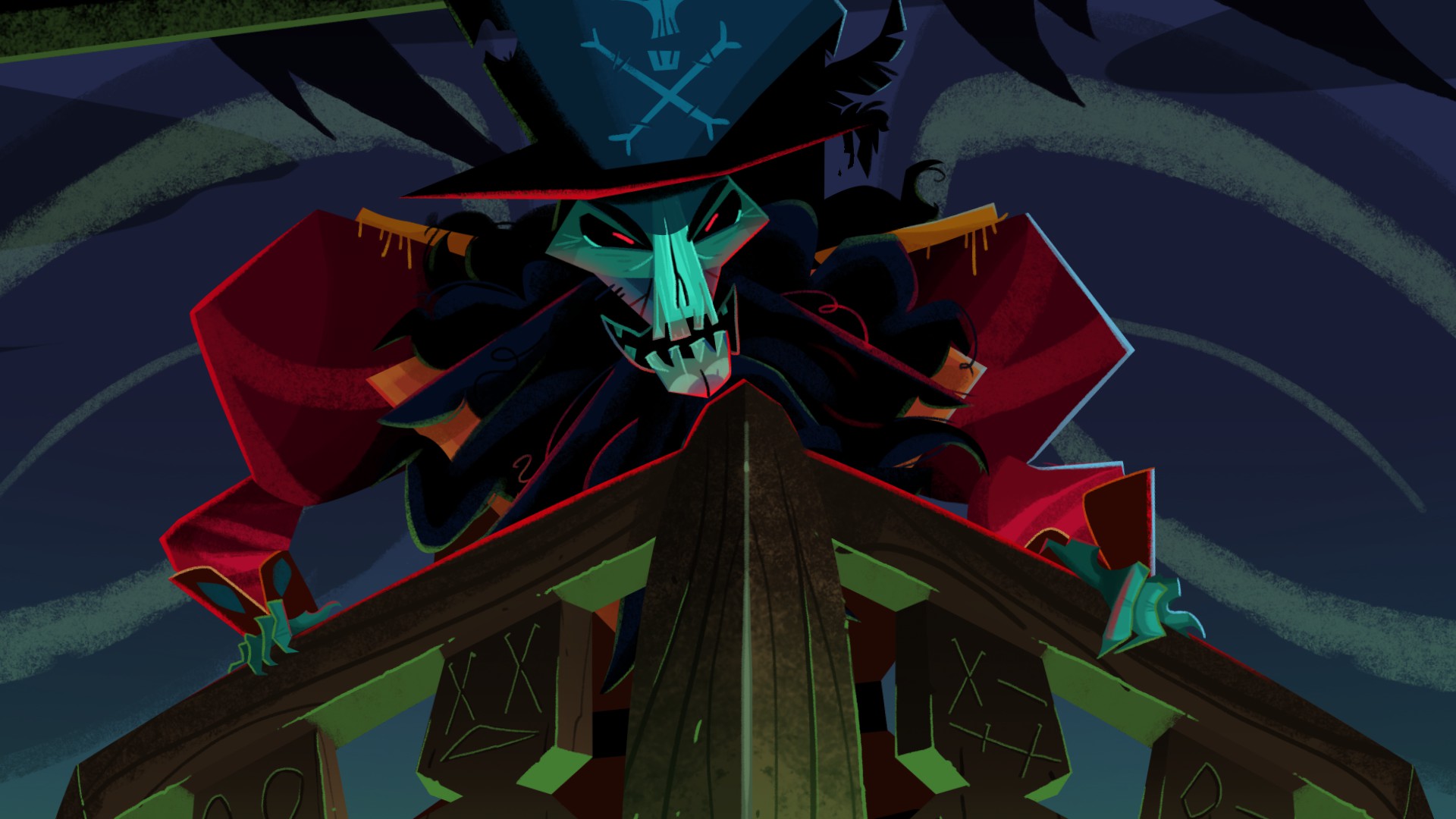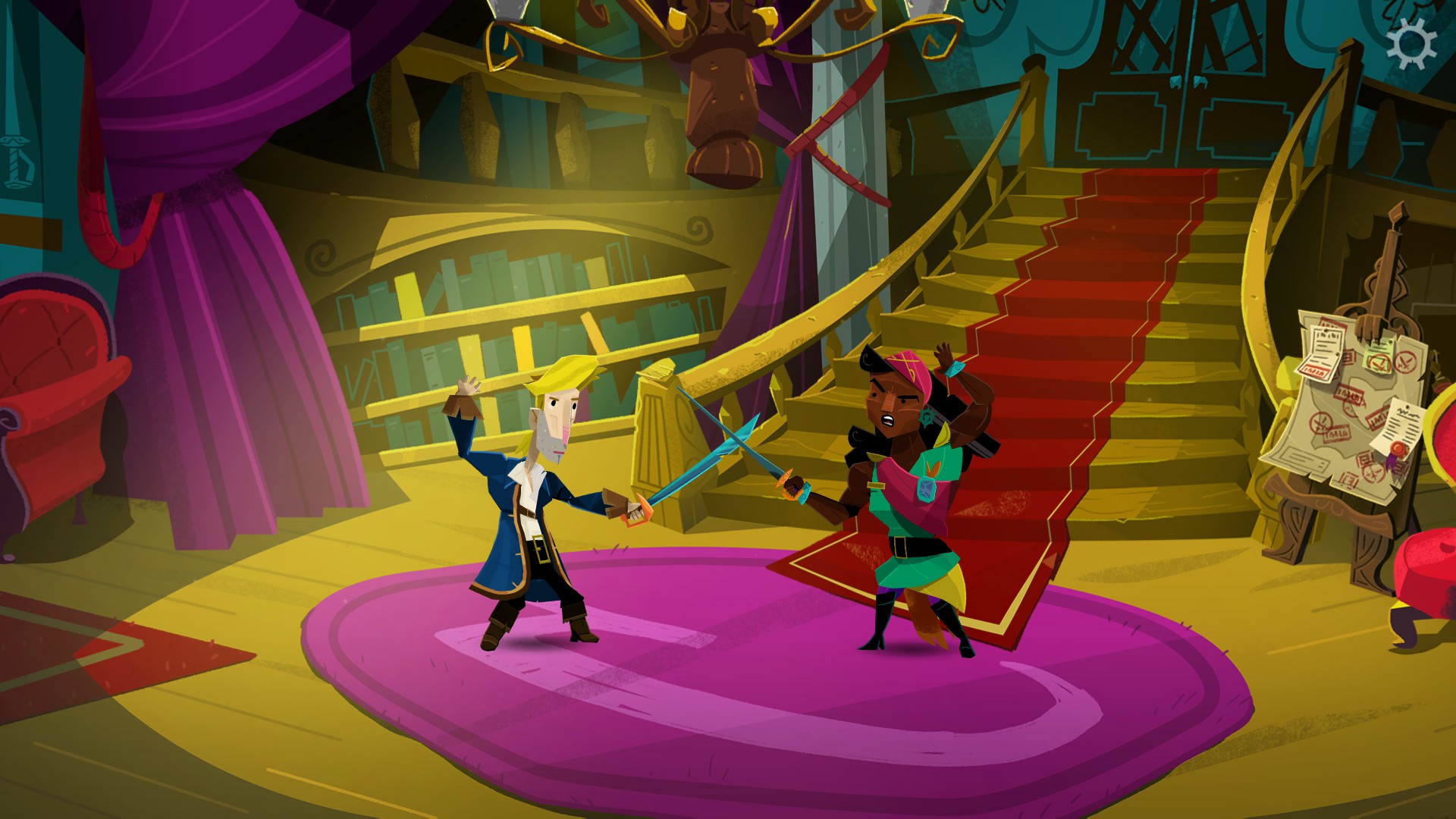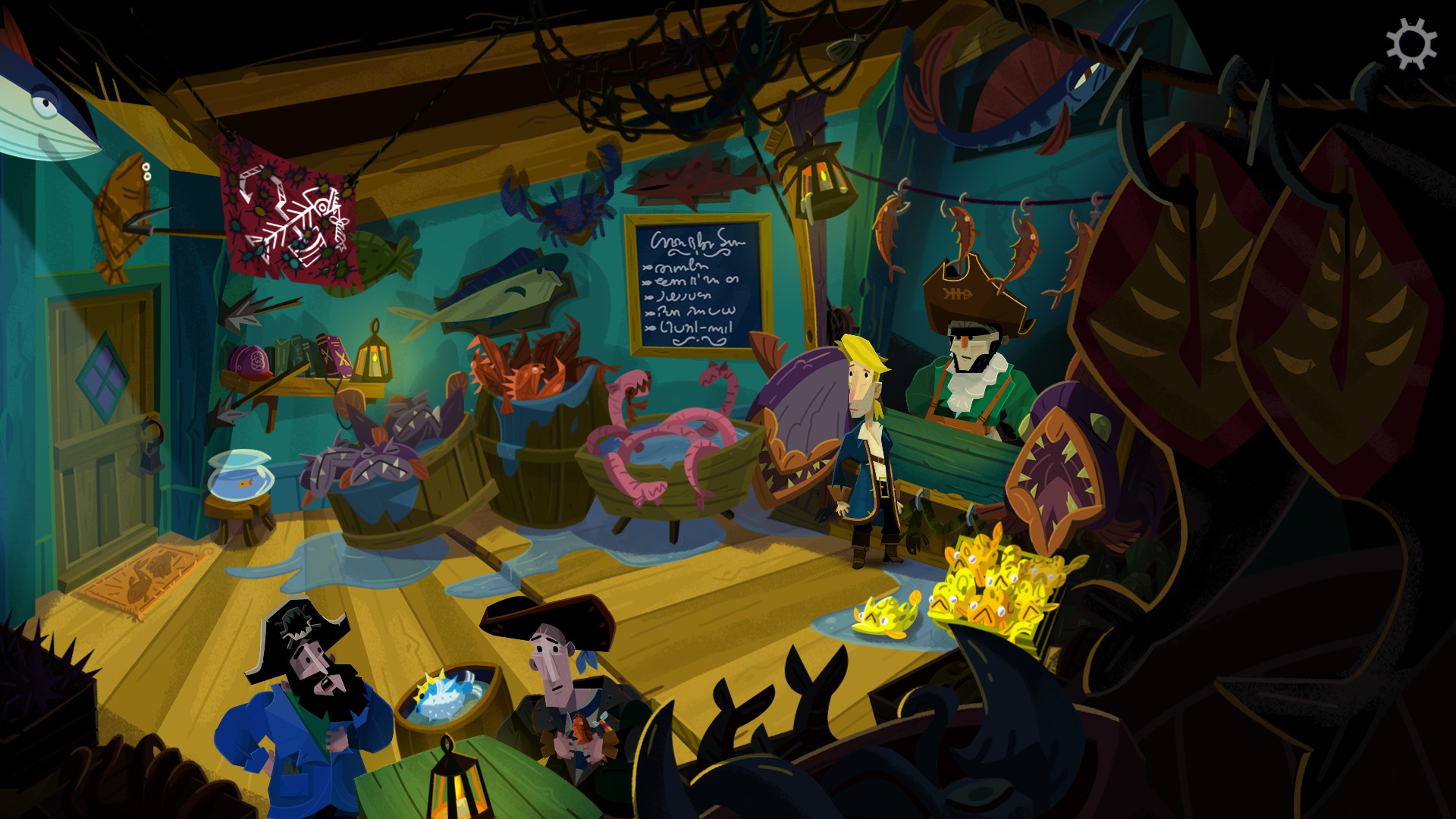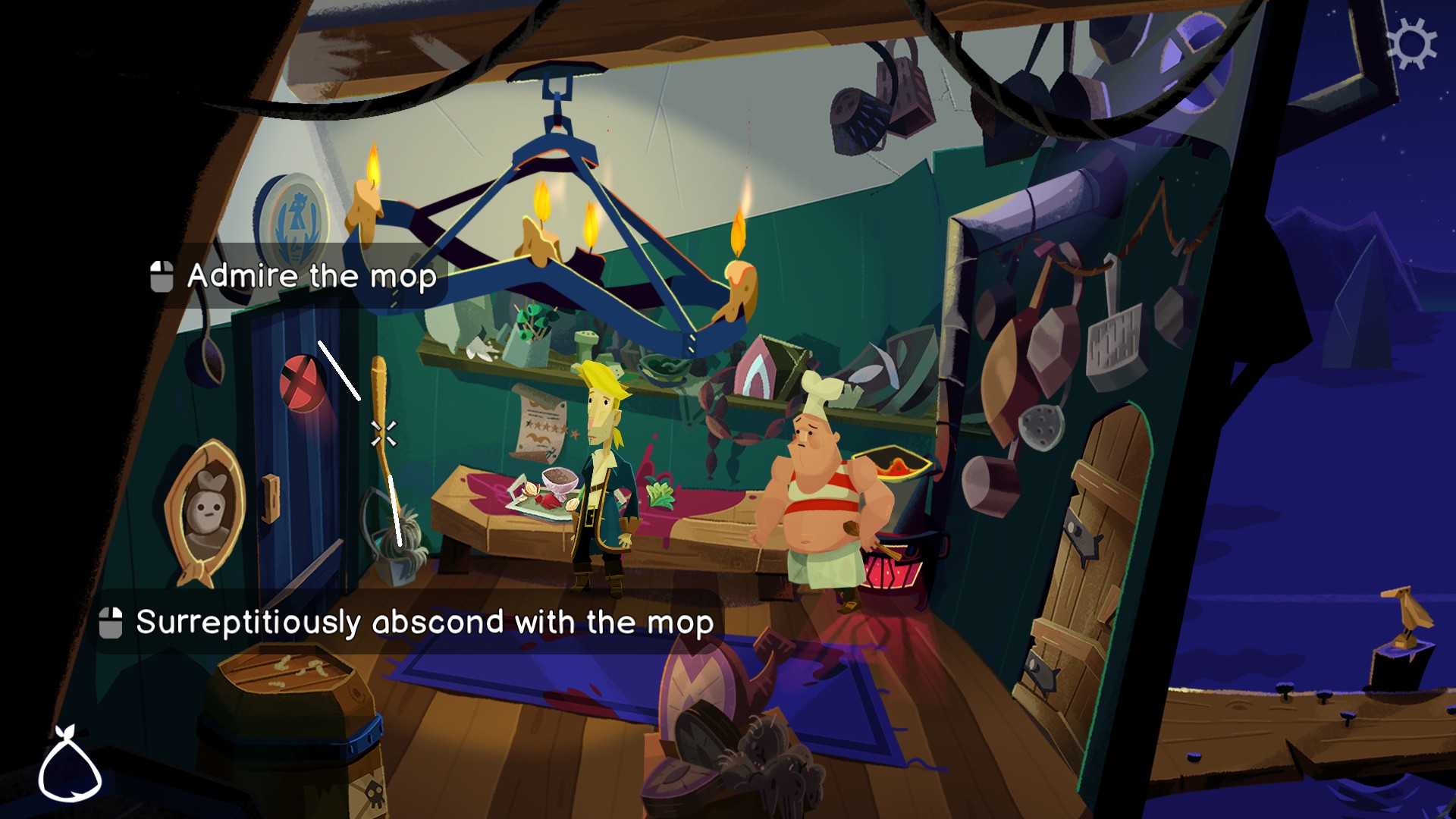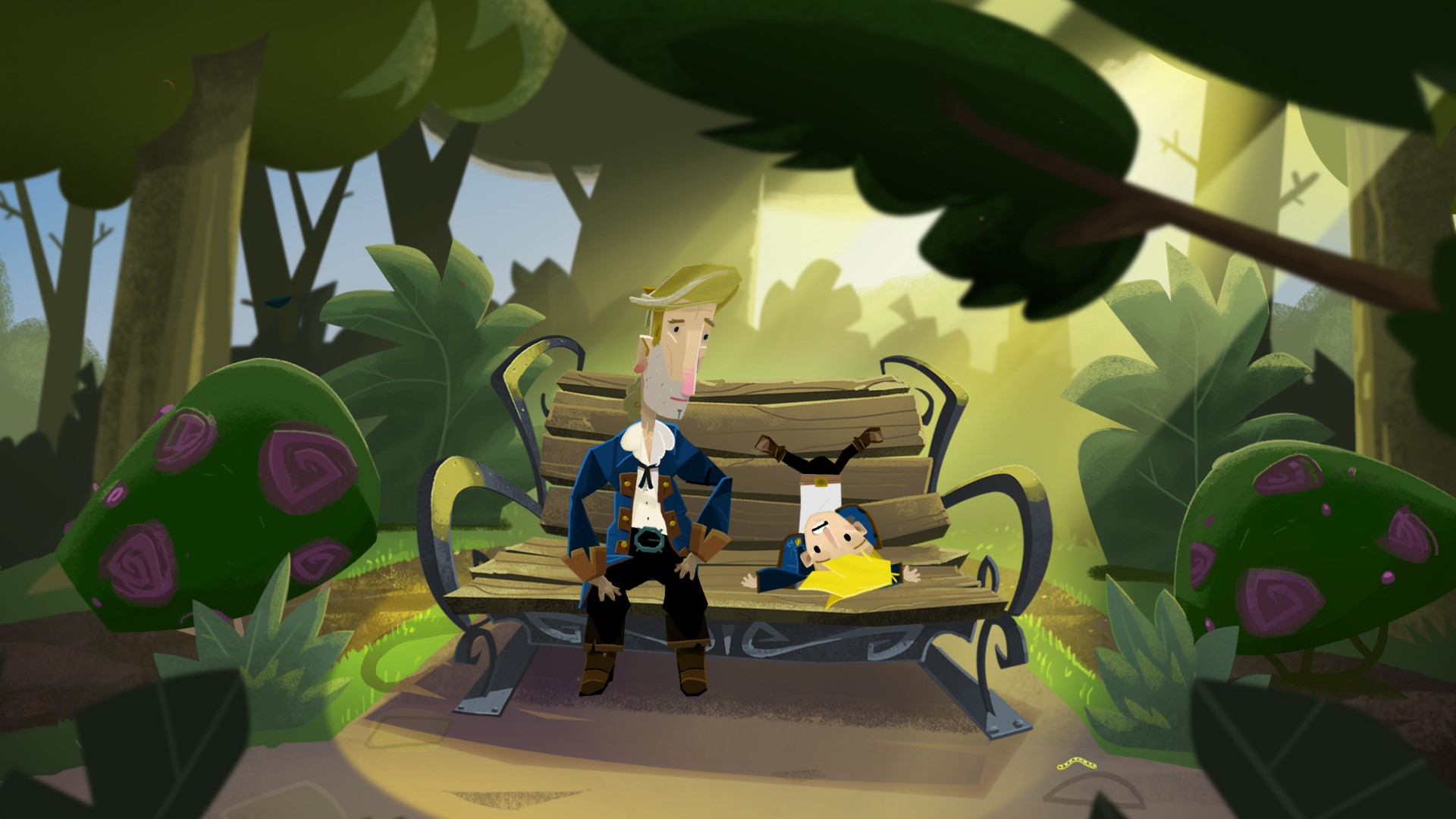Our Verdict
A brilliant return to the series at its best that modernises the point-and-click form.
PC Gamer's got your back
What is it? A bright, knowingly daft point and click adventure that picks up after 1991's Monkey Island 2: LeChuck's Revenge.
Expect to pay $25/£19.49
Released September 19, 2022
Developer Terrible Toybox
Publisher Devolver Digital, Lucasfilm Games
Reviewed on Intel i7-8550U, GeForce MX150, 16GB RAM
Multiplayer? No
Link Official site
The infamously bewildering ending to 1991's Monkey Island 2: LeChuck's Revenge left players longing for resolution that subsequent Monkey Island games never delivered. Three decades later, and after effectively saying it would likely never happen, key members of the original Monkey Island team—including series creator Ron Gilbert—have finally made the game that picks up after the closing moments of LeChuck's Revenge. Of course, they immediately subvert our 30-year-old expectations about what happens next.
Return to Monkey Island's mischievous opening confidently asserts that this is the authentic Monkey Island experience we've come for: sharp, self-aware, and brilliantly silly. It'll bombard you with gags, but the characters you meet are more than comedic props, and the cunning stream of interwoven puzzles has been modernised to keep the pace up without losing the satisfaction of problem solving. It's a massive success.
The opening prologue whips you through an homage to classic Monkey Island moments before thrusting the shamboling Threepwood back into his past. Older, tireder and more challenged by holding his breath, Guybrush has grown in tandem with us, as have Monkey Island's classic characters and locales. Everything and everyone here has gone on a journey. Wally the cartographer has been reshaped by finding his confidence without losing his charming spirit, and even LeChuck seems to have found a softer side despite remaining the furiously irritated villain we adore.
Everything is different, but familiar in Return to Monkey Island, from its characters and narrative to its revised systems for interaction and puzzle solving. It can temporarily transport you to the '90s—at least if you also have cosy memories of staying up too late solving pirate puzzles—but it isn't stuck there.
The story is consistently engrossing and energetic, but spoiling too many details would be beneath LeChuck himself, so I'll keep things general. After starting out in the first game's Mêlée Island, Guybrush takes to the seas to explore vintage locations such as Monkey Island itself, as well as entirely new lands including the tormented, eerie Terror Island and Brrr Muda, a place inspired by the Viking age. Guybrush is once more in pursuit of Monkey Island's infamous secret. LeChuck, too, has returned to the quest. And both, of course, remain besotted by Elaine Marley. Neither, meanwhile, has gained any real sense of what the secret of Monkey Island actually is.
All that is the same, but with the passage of time new figures have risen to power, upsetting the traditions and conventions of Guybrush's world. The old guard of established sea dogs now exist on the fringes, replaced by youthful upstarts eager to reset the rulebook. Even voodoo is no longer in favour, with younger generations favouring "dark magic" in its place.
A great many of Return to Monkey Island's best moments come from the new characters, who are almost universally brilliant. Highlights include the oddly charismatic Putra, undead galley chef to LeChuck, who serves both rasping sass and all manner of delightfully gross food gag set-ups as she gradually develops an affection for Guybrush. Or there's Mêlée's town's new locksmith, Locke Smith. Deliberately absurd name aside, Locke is stern and cool to the bone, and endures Guybrush at best, delivering all kinds of opportunities for laughs as she dismisses the protagonist's puns about 'locks' of hair, or extinguishes his enthusiasm for treasure hunting as he is bewildered by a map lacking any X to mark a spot.
This is a game constructed from the familiar as much as the new, of course. Much of Return to Monkey Island is built from settings that have undergone a subtle revolution. Visit this game's version of the Scumm bar, and at a glance everything appears the same. The overall composition is unchanged, right down to where people are seated. But let your eyes linger just a little longer, and it's apparent the original scene has been entirely reskinned.
Keep up to date with the most important stories and the best deals, as picked by the PC Gamer team.
The odd broken pane of glass in a window suggests plenty of pirate misbehaviour still takes place, but the Scumm Bar is not the tattered dive it once was. The once stained, pockmarked walls have been given a lick of vibrant paint, framed art hangs everywhere, and new clientele demand more ornate meals. Move through to the back of the bar, and a trio of hip, snarky youngsters now fill the seats that once belonged to the three ageing Pirate Leaders. It's a scene many of us may have seen play out in real life, as a beloved, imperfect drinking den succumbs to gentrification, and is suddenly all kinds of terrible; namely young, clean and fashionable. Meanwhile, the new locations in Return to Monkey Island are original by nature, but couple perfectly with the series' established tone and lore.
Back to the fut-arrrr
The overall design hasn't evolved much: This is a straightforward point-and-click adventure game that plays just as genre devotees expect. Conversing with the game's cast delivers the story, nudges you in the right direction, and seeds your mind with goals and hints, guiding you through puzzles that see you variously hunt down keys, outwit those who stand in your way, extract information from the environments, and unpick a path to whatever Monkey Island's secret might ultimately be.
This is a straightforward point-and-click adventure game that plays just as genre devotees expect.
But while this is a conventional point-and-click at a fundamental level, that's not to say it lacks inspiration. Far from it, there's an abundance of clever ideas, and fresh feeling puzzles with a playful spirit. Your inventory soon fills with all manner of daft items, from books of undead (and awful) poetry, avocado-based grog alternatives, and a few too many abandoned human skulls. Many of Return's finest puzzles, meanwhile, are those anchored primarily in conversation. One of the most memorable asks that you learn to spin a good pirating tale by determinedly reeling off badly delivered stories to unimpressed characters across the game world. Their feedback helps you hone your craft: a puzzle about writing in a game that is all about its writing.
Compared to the previous Monkey Island games, though, the puzzles here play out a little faster. It's not that this is a profoundly easier Monkey Island. Rather, you're less likely to get stuck on individual snarls or weird leaps of logic. The solutions are never as obtuse as the infamous monkey wrench puzzle from LeChuck's Revenge, for example. Thanks to a few small additions, Return to Monkey Island kept me feeling smart and capable more than overwhelmed or confused.
For those who just want to enjoy the world and humour, there's a Casual mode that simplifies the puzzles and emphasises the narrative. The more significant change to me, though, is the addition of contextual action descriptions. Hover over interactive objects, and the description of what you can do provides much more flavour than in past games. Whereas previously you might have got 'pick up' text when hovering over all manner of objects in the Scumm Bar's kitchen, now two pointers might appear that are specific to an individual item. Hover over the chef's mop, for example, and 'admire the mop' appears as an option for the left mouse button, while 'surreptitiously abscond with the mop' is displayed with a symbol for the right click.
It's a subtle tweak, but the additional text does much more than simply inject more delightful personality, tone and laughs into a game already rich in those things. The extra context doesn't make puzzle solving any easier, but it does provide more explicit information on what clicks might lead to, helping keep progression through the game more pacey and engaging. Rarely will you find yourself desperately clicking anything and everything with every available command in the hope of a hit; once a stalwart of interacting with even the best adventure games.
Then there's the hint system. It can be ignored by those who want the satisfaction of getting themselves unstuck, but for those of us who would normally head to Google, the in-game hints maintain immersion in the world. It's much better than pulling up an external guide, and you can choose how subtle or explicit the clues you digest are. Another small improvement for time-pressed players is Guybrush's run speed. Despite his age, he can move faster than ever. You'll mainly want to stroll leisurely, taking the experience in. But making the umpteenth pass through Mêlée's town centre? Sprint it.
The solutions are never as obtuse as the infamous monkey wrench puzzle from LeChuck's Revenge.
The most obvious and contentious modernisation is the art. Yes, it's not pixelated. But this is a Monkey Island for 2022, and the look suits Gilbert's world. Almost every screen bristles with more to see than is first apparent—incidental animated background moments such as busy columns of ants in the undergrowth, for example—making each island feel like a living place. The occasional shooting star feels like a detail from a '90s game, but looks contemporary. There are some gorgeous lighting effects and the scenes are framed exquisitely.
Importantly, the art is also functional: Items and details pop, and the way forward is never too obvious nor too obscure. There's no accounting for taste. If you don't like the art, you don't like it. But it works.
The audio too, is remarkable, reworking the classic score with variety and energy. The sound effects—from muttered conversations just offscreen to audiobeds rich in detail—are equally wonderful, creating a sense of space in the 2D scenes.
Its faults are mostly surface level things. Selecting or interacting with items in the inventory can be clunky and imprecise, and a shade too many puzzles send you back and forth across the entire game world. While the voice acting is largely outstanding, on very rare occasions lines seem to fall ever so slightly late, perhaps a quirk of the technology that lies beneath.
None of that should deter Monkey Island fans. Those who haven't played the Monkey Island games, however, may want to heed the implication of the title. You don't need to get the in-jokes to enjoy the story, and there's a surprisingly engrossing interactive scrapbook that provides a lively summary of the series' previous events, but to really enjoy Return to Monkey Island is to titter at the self-referential gags, or roll your eyes knowingly at Guybrush's deliberately bad lines and choices. Walking into a familiar building to find an unexpected interior is only delightful if you know the existing lore. Half of the fun is in getting the jokes or references before they're even fully revealed. As a Monkey Island fan, it's hard for me to imagine what a newcomer's experience would be like. But for those lifelong followers of Guybrush's misadventures, this is as good as it's been for a very long time: funny, captivating, superbly paced, contemporary and packed with neat ideas and eccentric characters. This is what we've been waiting for since LeChuck and Guybrush emerged from… well. If you know, you know. And if you don't, it's time to go back to the originals.
A brilliant return to the series at its best that modernises the point-and-click form.
